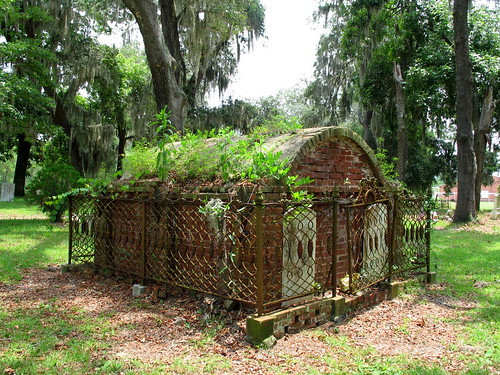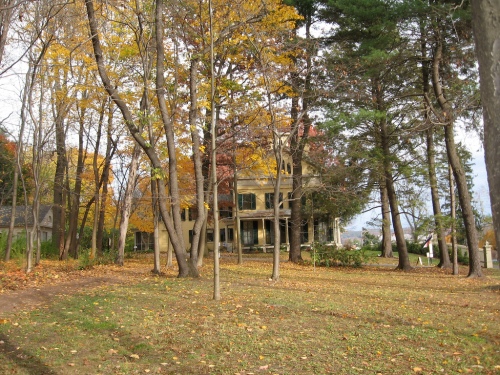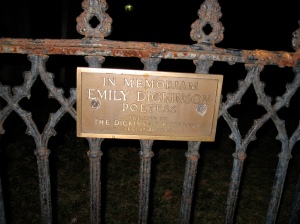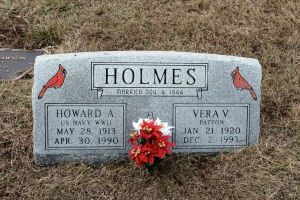By Bob Chrisman
After my father died in 1984, my mother made semi-annual trips to Southern California to stay with her step-sister-in-law, Aunt Gladys. Uncle Roy had died a couple of years before my dad did. I would fly out to spend some time with them and then accompany my mother home.
During my first visit, Mom and Aunt Gladys announced their desire to decorate Uncle Roy’s grave at the VA cemetery in Westminster, California, near the Pacific Coast. At 90 my aunt had stopped going. “I’m not as quick on the highway anymore. I’ll leave that to you.”
We loaded the car with grass trimmers, scissors, throw rugs, plastic buckets, dishwashing liquid, sponges, old rags, and rolls of paper towels. My aunt directed my driving.
“Take that exit. Now be careful, Bob. A lot of these people aren’t paying attention. Lucile, look. Honey, did you see those mums in front of that grocery store? Weren’t they beautiful? Roy loved mums.”
I moved into the right lane to head back to the store. Aunt Gladys wanted mums. And my mother would want to make Aunt Gladys happy. One right turn, three left turns, and 15 minutes later we pulled up to the store. They climbed out while I parked.
When I caught up with them in the store, they had removed all the pots of deep red mums from the rack and lined them up for inspection. My mother and my aunt handed me the mums they eliminated as possible choices.
“Here, put this back where it belongs.” While I redecorated the mum display, they narrowed the choice down to three.
“Bob, you pick the one you think is the best one.”
I chose, but my choice wasn’t the best one so they bought the one they had already agreed on.
That done, we headed toward the cemetery.
A sign greeted us at the entrance:
The level of the cemetery has been raised by several inches. If you have trouble finding the gravesite of a veteran, please contact the manager located on the property.
We drove to the spot closest to Uncle Roy’s grave. My aunt and my mother tottered across the grass. I, the beast of burden, unloaded the trunk and followed.
“Now, he’s here somewhere. Lucile, you don’t think they’ve moved him, do you? That sign said something…”
“No, Gladys, they only put more dirt on top of him.”
I found the spot. “Here it is.” I dropped all of the grave decorating equipment and took the bucket to get water.
As they spread out the throw rugs, Aunt Gladys said, “Lucile, I don’t remember the grave being this far from the road.”
“Gladys, it’s always been here.” Mom yelled at me. “Don’t fill the bucket too full. We don’t need that much water.”
They had donned their gardening gloves and hats and set to work. They trimmed the grass around the stone. They scrubbed the marker with old rags and dried it with the paper towels.
“Roy and I bought an in-ground vase. I can’t remember exactly where it is, but I’ll find it.”
She pulled out a knife with a long slender blade and stabbed the ground like Anthony Perkins slashed at Janet Leigh in “Psycho.” Stab, stab, stab.
“Aunt Gladys, please stop.” Mom didn’t say a word. Stab, stab, stab.
“I need to find that vase. It’s buried here. They better not have removed it. We paid good money for it.” Stab, stab, stab.
“Wait. Put the knife down. I’ll go to the office and find out where the vase is.” Stab, stab, stab.
My aunt worked up quite a sweat. “Okay. I’m tired. Why don’t you go to the office. We’ll keep ourselves busy while you’re gone.”
I ran to the car. I knew they wouldn’t wait long to do whatever they wanted to.
I drove to the office. As I entered the building, the air-conditioning hit me in the face like a block of ice. The hot and humid outside air vanished in a room where you could have hung meat without it spoiling.
A cheery young woman asked, “Hello. May I help you find your loved one?”
I smiled. “My aunt is stabbing her husband’s grave with a knife to find the in-ground vase. To avoid injury to her, can you tell me where the buried vase is located?”
The woman’s mouth dropped open.
“Let me speak to the manager.”
She disappeared only to return with a rotund man dressed in a robin’s-egg blue polyester, double-knit suit. The exertion of walking from his office to the desk had turned his face beet red and he mopped his brow with a white handkerchief.
“I’ll show you where it is.”
I asked, “Do you want me to drive?” I wasn’t sure he would fit in the rental car.
“No, I’ll take my car. Suits me better.”
He climbed in a huge car, exactly the same color as his suit and rolled down his window.
“Lead the way.”
When we arrived at the gravesite, I pointed to my aunt and mother busily working.
“That’s them.”
He nodded and waddled off, wiping his head and neck as he went.
When I arrived at the throw rugs, grass trimmings and dirt covered both women. The manager stared at the ground, his jaw agape.
Aunt Gladys said. “Honey, we don’t need him. When we couldn’t find the vase I paid for…” she looked up at the manager. “…we simply dug a little hole and planted the mums on top of Roy.” She looked very happy. They both did, but the manager didn’t.
“You…you can’t do that.”
“Can’t do what, young man?”
“Can’t go around digging holes in the cemetery. It’s…well, it’s grave desecration.” His color had grown much redder. Sweat poured off his face. His handkerchief looked sopping wet. “It’s against the law to dig holes here.”
“If we had been able to find the vase, which, I will remind you again, we paid for, my sister-in-law and I wouldn’t have dug this hole.”
He took out a pocket knife. My aunt grabbed her knife, prepared to fight.
He stepped next to the stone. He jabbed in the ground and dug out some grass.
“Here. Right here.” He stood up with a smug smile on his face.
My aunt ignored him. “Lucile, look. It was right there all the time…under a foot of grass and dirt.”
“Next time, ladies, please don’t dig a hole.” He snapped his knife shut and waddled back to his car.
“I think I’ll report him. Grave desecration? What a bad attitude these young people have.” She extended her hand to me. “Help me up.”
With both of them on their feet, I brushed off their clothes. I gathered everything, wrapped the knife in an old rag and dropped it in the bucket. I packed the stuff in the trunk.
When I went back to help them to the car, I heard my aunt ask, “I think we did a lovely job, don’t you? Roy would be pleased.” My mother agreed.
About Bob: Bob Chrisman is a Kansas City, Missouri writer who frequently writes memoir about his mother, her three sisters, and their influence on his life. Desecration Day is about his Aunt Gladys and his mother. Other pieces about his aunts include Aunt Annie’s Scalloped Oysters and The Law Of Threes. He published two pieces about the life and death of his mother — Hands and In Memoriam.
He also wrote a trilogy about his father: My Father’s Witness, Bearing Witness, and My Life With Dad. Bob’s other red Ravine posts include Growing Older, Goat Ranch, and Stephenie Bit Me, Too.
Read Full Post »


























































